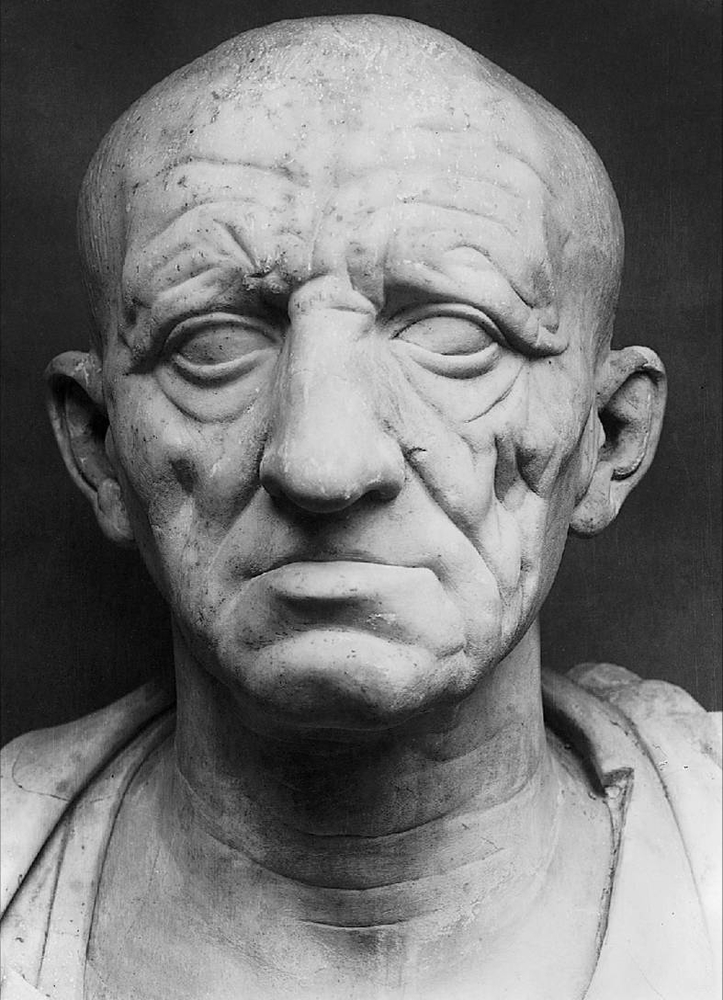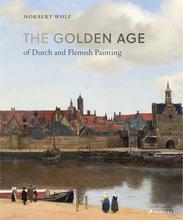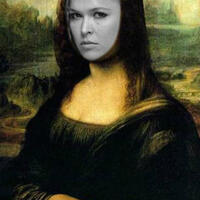More about Anthony van Dyck
- All
- Info
- Shop
Works by Anthony van Dyck

Sr. Contributor
Anthony van Dyck's a hustler, baby.
Anthony showed a lot of talent early on. Which made it pretty easy to climb the ladder of artistic success, what with his rich silk merchant father around to grease wheels. Anthony moved up to the big leagues at 14 when he became Peter Paul Rubens' MVP at the master's studio in Antwerp. Rubens was quick to make van Dyck his chief assistant. By 17, van Dyck's on his own and Rubens sees him as a threat.
Rubens never lost the crown as best-in-Flanders, but he thought Antwerp was too small for van Dyck as a competitor. So, Rubens got van Dyck off the continent by pulling strings to get the boy an appointment with the English court for King James I. Van Dyck wasn't having English life, and threatened to come back to Antwerp. Rubens called in some more favors and got friends in Genoa to throw van Dyck some work. Anthony became enamored with the Venetian school and used his Italian time between commissions to learn from the works of Titian and others.
After Anthony left Italy, Rubens was out of Antwerp for a couple years on business. Van Dyck cozied in on some major Antwerp commissions, acting the Zuckerberg to Rubens' Winklevoss twins. Rubens didn't have to retaliate, though, as England's new king, Charles I, solved the van Dyck problem. Charles made Anthony England's #1 painter, offering a salary, with a sick gold chain and a couple estates as a signing bonus. Van Dyck poured out one portrait after another for the English court. Charles was so pleased, he knighted van Dyck. The Flemish painter was so influential on the British Isles that his facial hair became a vogue style, known, of course, as the Van Dyke beard.
Van Dyck tried to move on to greener pastures as revolution fomented among the English. He made a failed play to become head honcho of the art cartel in Antwerp following Rubens' death. He struck out with the Low Countries' Spanish overlords. Then, Paris' king nixed his advances. Out of options, he rolled the dice and moved back to London. He caught a cold en route to London and died shortly after his return. England plunged into Civil War a year later. King Charles was executed in some mob justice, partly due to how much he spent on extravagances like court artists while the people starved.
It's possible to own a van Dyck today and not even know. A 2013 episode of Antiques Roadshow featured the rediscovery of a lost van Dyck. Valued at $573,000, it's the most expensive art the show's ever uncovered. The unassuming couple paid just $500 or so for the work a year earlier. In Jan. 2016, Turkish police arrested a couple of businessmen from smuggling a $4 million van Dyck out of the country. The businessmen are additionally accused of defrauding the van Dyck from a resident of the country Georgia, who bought it in a shop for $5000.

Contributor
Meet Anthony van Dyck, my favorite artist!
Born March 22, 1599 - Died December 9, 1641
Born into the upper middle-class in Antwerp, he hung out with Jan Brueghel the Younger.
Ridiculously talented. He painted the self portrait above when he was fifteen and became chief assistant to Rubens at age 19. Rubens called him "the best of my pupils."
He was a bit of a dandy, very charming, and very comfortable hanging out with aristocrats. This gave him great access to wealthy patrons and inspired jealousy among some of his fellow artists who thought that van Dyck was a bit too big for his britches.
Court painter to several European royal families, but spent most of his career working for King Charles I of England. Instagram had not been invented yet, so paintings were the way to go if you wanted to send pictures of yourself to people, so van Dyck ended up painting over forty portraits of the king and thirty of the queen.
He had two daughters, one by his wife and one by his mistress.

Featured Books & Academic Sources
The following is an excerpt from the book "Van Dyck; A Collection of Fifteen Pictures and a Portrait of the Painter with Introduction and Interpretation," written by Estelle M. Hurll and published in 1902:
The student of Van Dyck's art naturally classifies the painter's works into four groups, corresponding chronologically to the four successive periods of his life. There was first the short period of his youth in Antwerp, when Rubens was the dominating influence upon his work. The portrait of Van der Geest, in the National Gallery, belongs to this time.
Then followed the four years' residence in Italy, when he fell under the spell of Titian. This was the period of the series of splendid portraits of noble Italian families which are to this day the pride of Genoa. Here too belong those lovely Madonna pictures which brought back for a time the golden age of Venetian art.
Upon his return to Antwerp, the six succeeding years gave him the opportunity to work out his own individuality. Some noble altar-pieces were produced in these years. Pleasant reminiscences of Titian still appear in such work, as in the often-used motif of baby angels; but in the subjects of the Crucifixion and the Pietà, he stands quite apart. These works are distinctly his own, and show genuine dramatic power.
During this Flemish period Van Dyck was appointed court painter by the Archduchess Isabella Clara Eugenia, Spanish Regent of the Netherlands. In this capacity he painted a notable series of portraits, including some of his most interesting works, which represent many of the most distinguished personages of the time.
The last nine years of Van Dyck's life were passed in England, where the family of Charles I. and the brilliant group of persons forming his court were the subjects of his final series of portraits. There were no altar-pieces in this period. At the beginning of his English work Van Dyck produced certain portraits unsurpassed during his whole life. The well-known Charles I., with an equerry, in the Louvre, is perhaps the best of these. His works after this were uneven in quality. His vitality was drained by social dissipations, and he lost the ambition to grow. Some features of the portraits became stereotyped, especially the hands. Yet from time to time he rose to a high level.
A painter so easily moulded by his environment cannot justly take rank among the world's foremost masters. A great creative mind Van Dyck certainly had not, but, gifted assimilator that he was, he developed many delightful qualities of his art. The combined results of his borrowing and his own innate gifts make him a notable and indeed a beloved figure in art history.
The leading note of his style is distinction. His men are all noblemen, his women all great ladies, and his children all princes and princesses. The same qualities of dignity and impressiveness are carried into his best altar-pieces. Sentiment they have also in no insignificant degree.
It is perhaps naming only another phase of distinction to say that his figures are usually characterized by repose. The sense of motion which so many of Reynolds's portraits convey is almost never expressed in Van Dyck's work, nor would it be consistent with his other qualities.
The magic gift of charm none have understood better when the subject offered the proper inspiration. We see this well illustrated in many portraits of young noblemen, such as the Duke of Lennox and Richmond and Lord Wharton.
Van Dyck's clever technique has preserved for us the many rich fabrics of his period, and his pictures would be a delight were these details their sole attraction. Heavy velvet, with the light playing deliciously in the creases, lustrous satins, broken by folds into many tints, delicate laces, elaborate embroideries, gleaming jewels—these are the never-failing accessories of his compositions. Yet while he loved rich draperies, he was also a careful student of the nude. Examples of his work range from the supple and youthful torso of Icarus to the huge muscular body of the beggar receiving St. Martin's cloak. The modelling of the Saviour's body in the Crucifixion and the Pietà shows both scientific knowledge and artistic handling.
Generally speaking, Van Dyck was little of a psychologist. His patrons belonged to that social class in which reserve is a test of breeding and thoughts and emotions are sedulously concealed. To penetrate the mask of the face and interpret the character of his sitter was an office he seldom took upon himself to perform. Yet he was capable of profound character study, especially in the portrayal of men. Even in so early a work as the so-called portrait of Richardot and his son, he revealed decided talent in this direction, while the portrait of Cardinal Bentivoglio, of the Italian period, and the portrait of Wentworth, in the English period, are masterly studies of the men they represent.
A common feature of his portraits is the averted glance of the sitter's eyes. This fact is in itself a barrier to our intimate knowledge of the subject, and also in a measure injures the sense of vitality expressed in the work. It must be confessed that Van Dyck, disciple though he was of Rubens and Titian, fell below these masters in the art of imparting life to a figure.
In certain mechanical elements of his art Van Dyck was conspicuously deficient. He seemed to have no ingenuity in devising poses for his subjects. Sitting or standing, the attitude is usually more or less artificial and constrained. The atmosphere of the studio is painfully evident. Never by any accident did he seem to catch the sitter off guard, so to speak, except in a few children's portraits. Here he expressed a vivacity and charm which seemed impossible to him with adult subjects.
In composition he is at his best in altar-pieces. In portrait groups, as in the pictures of the children of Charles I., he apparently made no effort to bring the separate figures into an harmonious unity. A single figure, or half length, he placed on his canvas with unerring sense of right proportion. Perhaps the best summary of Van Dyck's art has been made by the English critic, Claude Phillips, in these words: His was "not indeed one of the greatest creative individualities that have dominated the world of art, but a talent as exquisite in distinction, as true to itself in every successive phase, a technical accomplishment as surprising of its kind in solidity, brilliancy, and charm, as any that could be pointed to even in the seventeenth century."
Sources
- Estelle M. Hurll. "Van Dyck; A Collection Of Fifteen Pictures And A Portrait Of The Painter With Introduction And Interpretation." (New York: Houghton Mifflin, 1902.) vii-x.
Featured Content
Here is what Wikipedia says about Anthony van Dyck
Sir Anthony van Dyck (/vænˈdaɪk/; Dutch: Antoon van Dyck [ˈɑntoːɱ vɑn ˈdɛik]; 22 March 1599 – 9 December 1641) was a Flemish Baroque artist who became the leading court painter in England after success in the Spanish Netherlands and Italy.
The seventh child of Frans van Dyck, a wealthy silk merchant in Antwerp, Anthony painted from an early age. He was successful as an independent painter in his late teens and became a master in the Antwerp Guild on 18 October 1617. By this time, he was working in the studio of the leading northern painter of the day, Peter Paul Rubens, who became a major influence on his work.
Van Dyck worked in London for some months in 1621, then returned to Flanders for a brief time, before travelling to Italy, where he stayed until 1627, mostly in Genoa. In the late 1620s he completed his greatly admired Iconography series of portrait etchings of mainly other artists and other famous contemporaries. He spent five years in Flanders after his return from Italy, and from 1630 was court painter for the Archduchess Isabella, Habsburg Governor of Flanders. At the request of Charles I of England he returned in 1632 to London as the main court painter.
With the exception of Holbein, van Dyck and his contemporary Diego Velázquez were the first painters of pre-eminent talent to work mainly as court portraitists, revolutionising the genre. Van Dyck is best known for his portraits of the aristocracy, most notably Charles I, and his family and associates. He was the dominant influence on English portrait-painting for over 150 years. He also painted mythological, allegorical and biblical subjects, including altarpieces, displayed outstanding facility as a draughtsman, and was an important innovator in watercolour and etching.
His influence extends into the modern period. The Van Dyke beard is named after him. During his lifetime, Charles I granted him a knighthood, and he was buried in St Paul's Cathedral, an indication of his standing at the time of his death.
Check out the full Wikipedia article about Anthony van Dyck






















